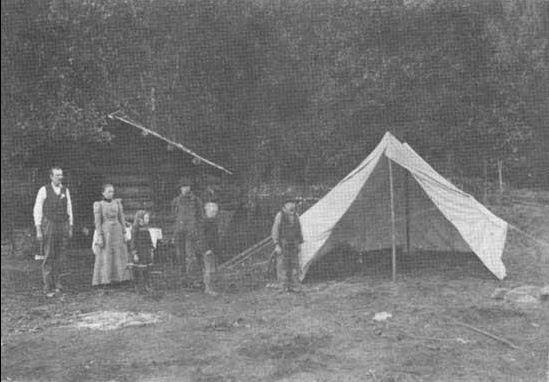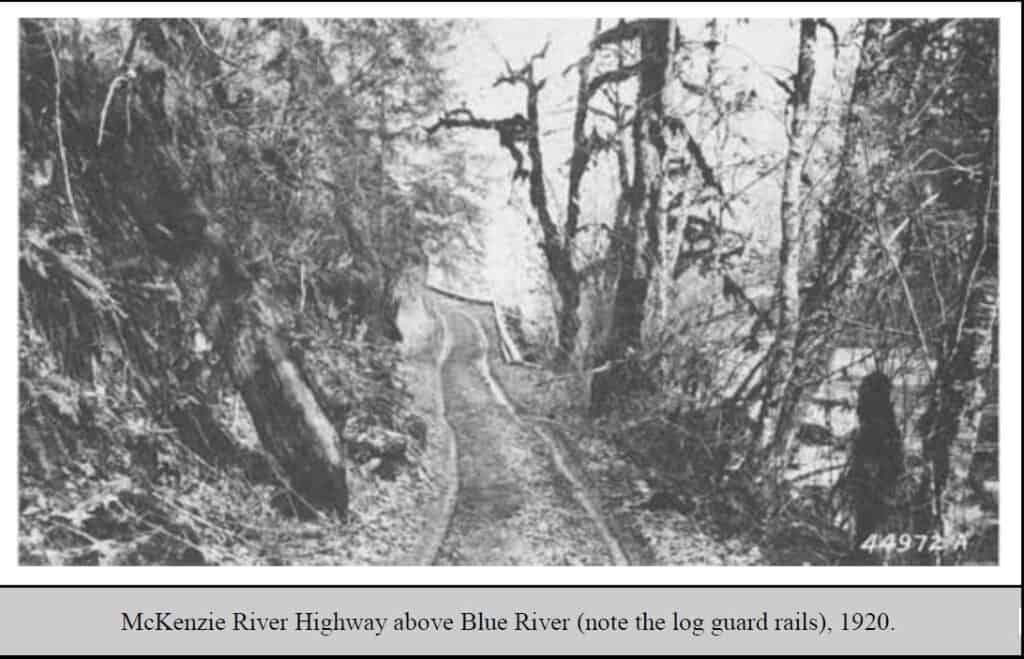
This is more history than story, but here goes…
From: Steven W. Coady:R06F18A
Date: ## 02/28/97 10:57 ##
A lot of this information came from our forest history book, written by Lawrence and Mary Rakestraw in the late 1980’s, including the last two sections. What has changed this, I feel, is mobilization, cars. In 1909, when McFarland first came to this forest, one of the rangers from McKenzie area wrote that it took two days of hard riding with a pack animal to reach Eugene, OR. Today, you can make that journey in an hour. McKenzie R.D. and Oakridge R.D. are about the same distance.
Another factor is people are more global now. In the early days, communities were small and semi‑isolated if for no other reason because of roads or lack of roads. Rangers and their wives were a PART of those communties. Any anger or resentment towards the government that those residents felt were directed towards the RO or WO, not the ranger. Also, what I’ve found is that a lot of the problems we face now, such as group(s) wanting to take back government lands for the counties, grazing issues, timber theft, wilderness issues, district consolidations, etc. Not a lot has really changed in 100 years! sc
I’ve selected some paragraphs from the document that Steven sent that I personally found interesting, and the entire document is linked here. The Rakestraw book has fortunately been uploaded in its entirety by the Forest History Society here.
Depression Ideas
In 1931, McFarland & Axel Lindh (RO), studied ways to alleviate some of the distress of the Depression. The report stated that even though the F.S. could supply the timber sales that could potentially keep employment up, stagnation in the lumber industry would make for periods when sales were not made. A proposal of McFarland & Lindh was that some 2,500 acres in T.21 S, R.3 E (Oakridge area), be surveyed for residential tracts. To be divided into small homesites of one‑quarter to one‑half acre each. Leased at $10 per year, larger ones at $3 per year. This program received additional endorsement from President Roosevelt in 1934. This evolved into the Resettlement Administration & in turn into the Farm Security Administration under Rexford Tugwell.
In April 1935, Regional Forester C.J. Buck wrote to the Forester recommending the proposal & suggesting that an initial 143 acres be set aside for industrial homesites. CCC labor could be used for clearing & surveying the lots, homes built using local lumber at $2,500 per unit. And with the increased number of WNF employees, 25 or 30 units could be leased to F.S. employees.
Roadless Areas
Beginning in the 1920’s, the Forest Service began to set aside roadless areas. By 1930, there were 52,300 acres set aside near Mt. Jefferson, 47,500 acres around Diamond Peak. Three Sisters was added later.
Treaty Rights
Native American treaty rights were protested in the early 1920’s due to their harvesting of huckleberries. Native Americans traveled by horse and it was deemed by stockmen that it was unfair that they had to pay for grazing rights and Indians didn’t. C.C. Hall brought this up in 1922, but soon the dependence on the automobile soon ended this when all began to travel to the berry fields by car.
Role of Ranger and Wife
As rangers, we were key men in mobilizing support for the Forest Service, living as we did, as members of the community, and working with all kinds of local and regional‑‑Obsidians, Grangers, 4‑H groups, Boy Scouts, county grazing associations, lumbermen’s guilds, representatives from the Warm Springs Indian Reservation, and last but not least, church groups. We put in a lot of “coal oil time” working with the community‑‑locating section corners, giving talks to a variety of groups, carrying on search expeditions for lost children, arbitrating disputes over a variety of matters, listening to complaints about forest policy, and giving advice and guidance to visitors.
The role of rangers wives was no less important. They offered hospitality to visiting brass‑a gallon of hot coffee and a huckleberry pie were always on hand if the Supervisor came visiting. If he was accompanied by the fire control chief, two pies were appropriate. She counseled employees on marital problems, administered first aid to the injured, and ministered to the indiscreet, who had been overcome by hospitality at a meeting of the Stockman’s Association, or the “Concatenated Order of Hoo Hoo”; took over the telephone system in cases of fire; and worked with a host of community associations. Much of the strength of the Forest Service came from the fact that rangers and rangers’ wives were highly respected members of the community; and criticism of the Forest Service was more often directed to the “Swivel Chair Foresters” of the Washington Office or the “Swedes in green pants” in Portland, than to the local organization.

Thanks for posting this. I find it very interesting. I noticed it was written just before the Willamette National Forest underwent the changes brought on by the NWFP.